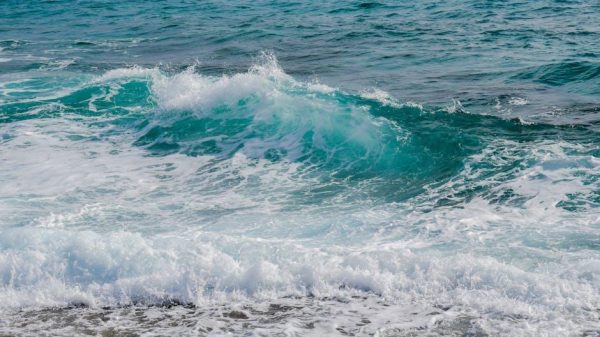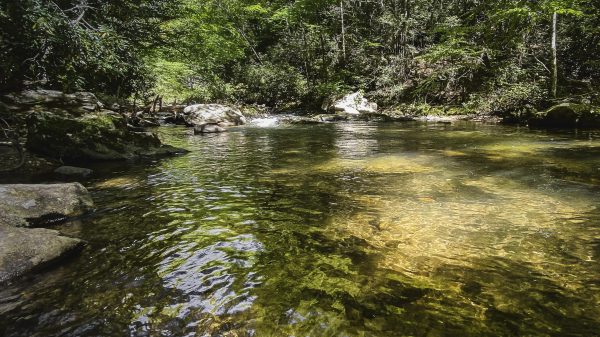As the sun rises over jagged peaks and untamed waves, extreme sports athletes push the boundaries of human capability, defying gravity and common sense in breathtaking displays of courage. Yet, beneath the adrenaline-fueled glamour lies an inconvenient truth: these adventurers often leave behind more than just footprints in the sand or tracks in the snow. In a world increasingly aware of its ecological fragility, the question arises—should these thrill-seekers be held accountable for the environmental impact of their pursuits? This article delves into the heart of the debate, exploring whether the quest for personal glory and the spirit of adventure should come with a responsibility to preserve the very landscapes that make these sports possible. Join us as we navigate the complex terrain of accountability, sustainability, and the future of extreme sports in an era that demands both exhilaration and environmental stewardship.
Thrill Seekers or Nature Wreckers Exploring the Environmental Impact of Extreme Sports
Extreme sports, by their very nature, often take athletes to the most untouched and pristine environments. However, the question arises: should these adrenaline enthusiasts be held accountable for the footprints they leave behind? From erosion caused by mountain bikers to the disturbances in delicate marine ecosystems from kite surfers, the environmental impact is undeniable. While some athletes are mindful and make efforts to minimize their impact, the cumulative effect of these activities can be substantial.
On the flip side, many argue that these athletes bring attention to the beauty of these landscapes, inspiring conservation efforts and fostering a deeper connection with nature. Yet, the ethical responsibility cannot be ignored. Should the thrill of conquering nature come at a cost to its preservation? Consider these points:
- Increased Foot Traffic: Trails and natural sites can suffer from overuse, leading to erosion and habitat disruption.
- Wildlife Disturbance: The presence of humans in remote areas can disrupt local wildlife, affecting breeding and feeding patterns.
- Waste and Pollution: Not all athletes adhere to leave-no-trace principles, leading to litter and pollution in fragile ecosystems.
With these considerations, the idea of implementing a “nature tax” or requiring insurance for environmental damage becomes a conversation starter. It’s a delicate balance between embracing adventure and ensuring that the playground remains as beautiful and vibrant for future generations.

Balancing Adventure with Accountability Proposals for Athlete-Driven Environmental Stewardship
As the thrill of extreme sports collides with the stark realities of environmental conservation, the call for athlete-driven stewardship becomes ever more pressing. While these athletes inspire awe with their feats, the impact on natural landscapes can be significant. Proposals for accountability seek to merge the passion for adventure with a commitment to sustainability. Here are some innovative ideas to consider:
- Environmental Impact Funds: Establish funds where athletes contribute a portion of their earnings or sponsorship deals to projects aimed at restoring or preserving the ecosystems they engage with.
- Mandatory Environmental Education: Require athletes to participate in workshops that educate them on minimizing ecological footprints during their activities.
- Eco-Friendly Gear Initiatives: Encourage the development and use of sustainable sports equipment, reducing the carbon footprint of extreme sports.
- Partnerships with Conservation Organizations: Foster collaborations between athletes and environmental groups to raise awareness and promote conservation efforts through joint campaigns.
By embracing these proposals, athletes can transform their roles from mere adventurers to active guardians of the natural world, ensuring that the landscapes they explore today will endure for generations to come.
Eco-Conscious Extremes Strategies for Sustainable Sports Practices
In the exhilarating realm of extreme sports, athletes often traverse untouched landscapes, scaling dizzying heights and diving into uncharted depths. However, this pursuit of adrenaline can sometimes leave a footprint on the very ecosystems that host these daring feats. Should these athletes bear the responsibility for the environmental impact of their adventures? Some argue that they should, as part of a broader commitment to sustainability. This could involve implementing a “leave no trace” policy, where athletes not only adhere to minimal impact guidelines but also contribute to conservation efforts in the regions they explore.
Consider the following strategies for sustainable sports practices that could be adopted by extreme sports athletes:
- Carbon Offsetting: Support projects that reduce carbon emissions to counterbalance travel and equipment usage.
- Eco-Friendly Gear: Choose gear and apparel made from sustainable materials and support brands with ethical production processes.
- Community Engagement: Work with local communities to restore and protect natural environments, ensuring the preservation of their unique habitats.
- Advocacy and Awareness: Use their platform to raise awareness about environmental issues and inspire fans to adopt sustainable practices.
By integrating these strategies, extreme sports athletes can transform their passion into a force for positive environmental change, ensuring that the landscapes they cherish remain pristine for generations to come.
From Trails to Tides Reimagining the Role of Athletes in Environmental Conservation
In the thrilling world of extreme sports, athletes often find themselves pushing the limits of nature, exploring terrains that few dare to tread. However, with the adrenaline rush comes an undeniable environmental impact. Should these athletes bear the financial responsibility for the damage they may inadvertently cause? This provocative question challenges the traditional notion of sportsmanship and conservation.
- Environmental Awareness: Athletes are increasingly becoming ambassadors for the natural environments they explore. By understanding their impact, they can advocate for sustainable practices.
- Community Involvement: Many extreme sports communities are already engaging in clean-up initiatives and conservation projects, setting a precedent for collective responsibility.
- Innovative Solutions: Some suggest a model where athletes contribute to environmental funds based on their activities, fostering a sense of accountability and support for restoration efforts.
As we reimagine the role of athletes in environmental conservation, it becomes crucial to balance their passion for adventure with a commitment to preserving the landscapes that fuel their sports. This evolving dialogue invites both athletes and enthusiasts to redefine what it means to be stewards of the earth.
Concluding Remarks
As we reach the summit of this exploration into the responsibilities of extreme sports athletes, it’s clear that the terrain is as rugged and complex as the landscapes they traverse. The thrill of the sport, the beauty of the untouched wild, and the undeniable impact of human presence intersect in a delicate balance that demands thoughtful consideration. While the question of who should bear the cost of environmental damage may not have a one-size-fits-all answer, it is evident that the conversation itself is a crucial step toward sustainable adventure.
As adventurers, stewards, and advocates, the responsibility to protect the environments that inspire and challenge us falls on every one of us. Whether through personal accountability, industry innovation, or collective action, the path forward requires courage, creativity, and collaboration. So, as we gear up for the next exhilarating challenge, let us remember that the footprints we leave behind should be as light as the winds that guide us. The wild is calling, and it deserves our respect. Let us answer with a commitment to preserving its beauty for generations of thrill-seekers to come.










